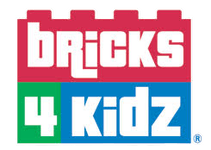Lego just took play into the 21st century with an app that lets kids share their creations on a safe social media network.
LEGO Life — a safe social media platform for kids of all ages — will be available for free download from today and includes a custom LEGO emoji keyboard.
The app is the first of its kind to be designed uniquely for kids and with their safety present in every aspect of the platform.
Release of the app in Australia comes alongside the revelation that 34 per cent of kids aged 8-13 are circumventing 13-plus age-restriction rules on sites like Facebook, Twitter and Instagram to access social media.
And alarmingly close to half of that cohort of younger users are “checking in” on status updates — revealing their locations — putting them at increased risk of being tracked by online predators.
LEGO says its app is a unique safe space for kids to share photos of and comment on each other’s brick creations and has been designed to keep children safe online.
Users will need emailed permission from their parents to access the app, no personal conversations, identifying photos or geolocation will be shared and it is expected kids as young as five will access the platform.
Conversations or likes on certain photos will only be conducted in emojis and will be moderated by a team of safety experts.
“The LEGO Emoji Keyboard helps kids and tweens inspire and support each other even though their spelling and typing skills may be still developing,” head of LEGO Life Rob Lowe said.
Similar to Facebook, kids will see a “newsfeed” customised to their preferences and they will also be able to identify and “follow” topics of interest.
E-safety commissioner Julie Inman Grant said keeping children safe online was paramount and designing apps with their safety in mind was an important step to preventing them from coming into contact with online predators.
But she said parents also had a responsibility to make sure their kids had the right tools to know how to be safe online.
“By embedding safety into the technology development process at the outset, this should minimise risks for users and obviate the need to retrofit safety measures after the potential harm has been done,” Ms Inman Grant said.
“That said, technology in and of itself will never be the panacea.
“Parents need to continue engaging with their children early and often and are ultimately best placed to determine whether their child has the maturity and resilience to be using certain apps.
“Moderated social media sites that are built for kids with safety protections in mind can serve as social media ‘on training wheels’ to help parents teach their children the importance of respect, civility and fun in their online communications.”
Research from the Office of the e-Safety Commissioner shows kids are getting better at using social media but many are still putting themselves at risk.
Of the 34 per cent of 8-13 year olds using social media, 43 per cent use the “check in” function, disclosing geolocation data to other users.
And 25 per cent allow the photos they share on social media to be seen by all users.
March 22, 2017 12:06am


